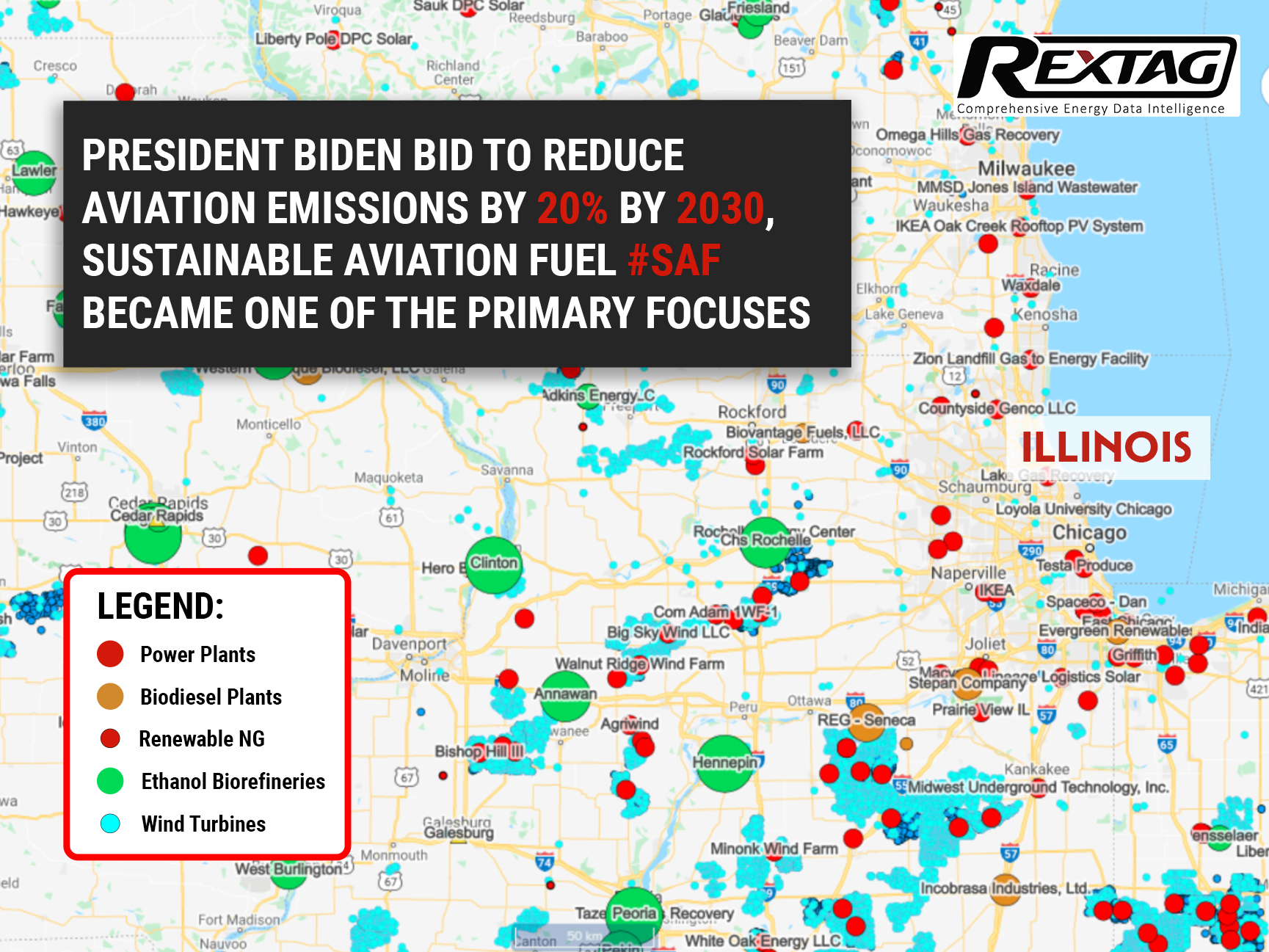Comprehensive Energy Data Intelligence
Information About Energy Companies, Their Assets, Market Deals, Industry Documents and More...
White House aims to enforce new sustainability standards in American aviation
09/15/2021
President Biden’s administration pledges to reduce aviation emissions by 20% by 2030, focusing at the same time on creating new jobs in the industry. The key to success in this venture is sustainable aviation fuel (SAF).
This move comes to light as a means to achieve promised climate goals and bring forward carbon-free aviation before 2050 as part of President Biden’s Build Back Better Agenda. Since modern American aviation stands for 11% of all transportation-related emissions in the region, this share of emissions will only continue to grow without appropriate actions as the volume of commercial or not flights steadily increases. And prioritizing fuel produced from waste cooking oil, plants, and animal fats may be just the right answer, considering SAF could cut up to 80% of aviation emissions.
Such problems demand comprehensive measures, and for sustainable aviation to be achievable, the industry requires efficient innovations not only in aircraft technology but also in fuel extraction. And while hydrogen and electric-powered aviation may come to fruition in the future, bold decisions especially for long-distance travel need to be taken now.
The new SAF tax credit supports a significant reduction of greenhouse gas emissions up to 50% by cutting costs while rapidly scaling domestic production of sustainable fuels for aviation. This credit will work in concert with measures taken by the aviation-related industries to reduce their carbon footprints.
The White House's commitment to the transformation of aviation stems not only from the desire to address ecological challenges, but also to create union jobs, aid airport workers in improving environmental quality, and open rural economic opportunities to use sustainable fuels derived from a wide range of feedstocks and pathways. Aviation is changing toward a zero-carbon sector. To make this transformation, however, aircraft manufacturers, airlines, fuel producers, airports, and the Federal government will have to work together. And with the upcoming executive actions, new federal programs, and private sector commitments, the industry may very well soon be on its way to that cherished goal.
It is predicted that the domestic SAF market will increase rapidly in the coming years, with production reaching well over the current 4.5 million gallons per year. But SAFs production won't scale up domestically without the support of policy and producer commitments. Growing domestic production will require a wide range of feedstocks and paths, and the industry will explore a variety of possibilities. Ethanol conversion into jet fuel is one of these alternatives.
As evident, several airports already are in hot pursuit of the infrastructure needed to enable SAF deliveries in the future. While in Los Angeles, CA (LAX) and San Francisco, CA (SFO) it is readily in use on short domestic passenger flights. Additionally, many U.S. airports have individual road maps to achieve net-zero emissions and are actively participating in the Airport Carbon Accreditation certification program.
For our part, keeping ahead of sustainable fuel initiatives, Rextag will continue to add asset and infrastructure data to enhance business development, market surveillance, and competitive awareness in the industry.
If you are looking for more information about energy companies, their assets, and energy deals, please, contact our sales office mapping@hartenergy.com, Tel. 619-349-4970 or SCHEDULE A DEMO to learn how Rextag can help you leverage energy data for your business.
Streamlining ESG Management in Oil & Gas: Simplify Compliance with the Latest Standards
![$data['article']['post_image_alt']](https://images2.rextag.com/public/blog/R131_B_ESG_Management.png)
To effectively manage ESG issues in O&G companies, a comprehensive approach is required, addressing multiple managerial issues. First, ESG considerations must be integrated into the corporate strategy, setting goals that align with business objectives, reflected in budgeting, capital allocation, and risk management. Accurate and efficient collection, management, and reporting of ESG data is necessary for identifying relevant metrics and indicators, such as greenhouse gas emissions, water consumption, and social impact indicators.
America's Climate Plan: Challenges and Hopes and Shift Away from Fossil Fuels
![$data['article']['post_image_alt']](https://images2.rextag.com/public/blog/312_Blog_America's Climate Plan Challenges and Hopes and Shift Away from Fossil Fuels .jpg)
The future once seemed optimistic for America’s climate ambitions, with rapid growth in renewable energy propelling the nation toward a cleaner, more sustainable future. However, a sobering reality has begun to sink in: despite some progress, the transition from fossil fuels is slowing down, and global emissions continue to rise.
![$data['article']['post_image_alt']](https://images2.rextag.com/public/blog/328_Blog_Why Are Oil Giants Backing Away from Green Energy Exxon Mobil, BP, Shell and more .jpg)
As world leaders gather at the COP29 climate summit, a surprising trend is emerging: some of the biggest oil companies are scaling back their renewable energy efforts. Why? The answer is simple—profits. Fossil fuels deliver higher returns than renewables, reshaping priorities across the energy industry.
![$data['article']['post_image_alt']](https://images2.rextag.com/public/blog/327_Blog_Oil Market Outlook A Year of Growth but Slower Than Before.jpg)
The global oil market is full of potential but also fraught with challenges. Demand and production are climbing to impressive levels, yet prices remain surprisingly low. What’s driving these mixed signals, and what role does the U.S. play?
![$data['article']['post_image_alt']](https://images2.rextag.com/public/blog/326_Blog_USA Estimated Annual Rail CO2 Emissions 2035.jpg)
Shell overturned a landmark court order demanding it cut emissions by nearly half. Is this a victory for Big Oil or just a delay in the climate accountability movement?